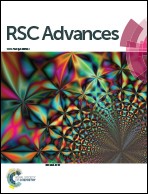A better understanding of the capacity fading mechanisms of Li3V2(PO4)3†
Abstract
Lithium vanadium phosphate Li3V2(PO4)3 (LVP) has emerged as an appealing cathode material for next generation lithium-ion batteries owing to its high theoretical capacity (197 mA h g−1) and high average working potential around 4.0 V vs. Li/Li+. However, the capacity fading problem limits its practical application, especially when a high cut-off voltage over 4.3 V is applied. In this study, the capacity fading mechanisms of LVP in different voltage windows of 3.0–4.3 V and 3.0–4.8 V are studied systematically by using electrochemical impedance spectroscopy, a galvanostatic intermittent titration technique, cyclic voltammetry, and in situ X-ray absorption spectroscopy. Surprisingly, the structure of LVP can be fully recovered after one cycle (even for a cut-off voltage as high as 4.8 V). It indicates that LVP is a promising cathode system with excellent structure reversibility intrinsically. We revealed that the capacity fading during high voltage cycling is mainly due to the parasitic reaction with the electrolyte, kinetics limitation and V dissolution, rather than LVP structure degradation. In addition, a “crystalline–amorphous–crystalline” phase transition pathway was revealed during the LVP synthesis process of the solid-state reaction by using synchrotron based in situ X-ray diffraction.


 Please wait while we load your content...
Please wait while we load your content...